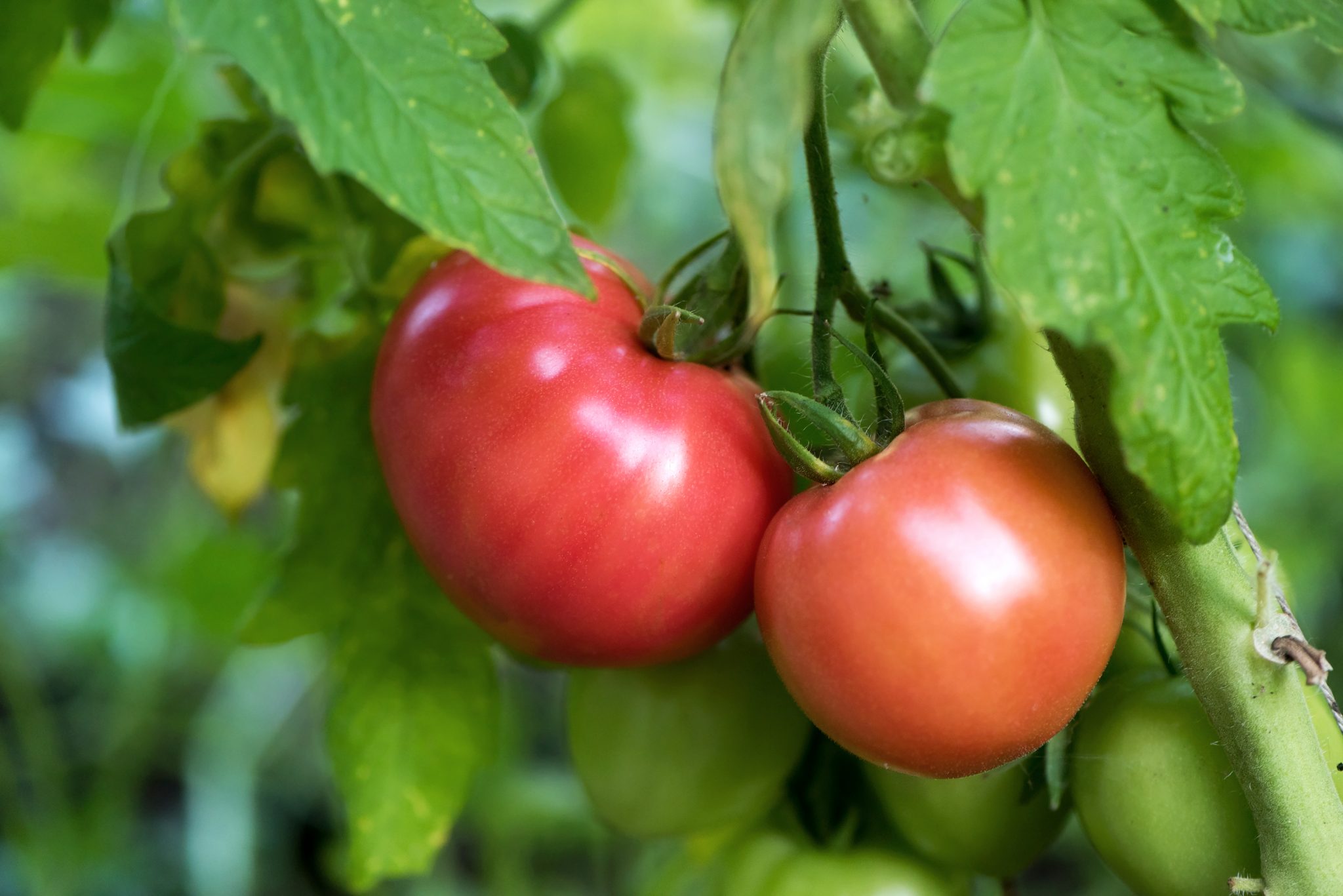Vegetables

*This is an excerpt from The Alabama Vegetable Gardener, ANR-0479.
Tomatoes are the most popular crop for Alabama vegetable gardens, but getting the most out of the tomatoes you plant requires more planning and careful work than any other crop.
Site selection is a key consideration in growing tomatoes. Plant tomatoes only in a sunny location, one that gets at least 6 hours of full sun a day during the growing season. Tomato production is reduced according to the amount of time the tomato plant is shaded.
Tomatoes produce well on a wide range of soils, but best yields are usually made on deep fertile loams and sandy loam soils. Almost any soil can be modified through the use of organic matter, lime, and fertilizer used according to soil test results. Avoid planting tomatoes on extremely sandy soils or heavy clay soils that are difficult to manage when dry.
Select an adapted variety and reject any plants with symptoms of disease. There are dozens of good tomato varieties, but it’s best to pick a recommended variety for your region. Be sure the variety you select has resistance to Verticillium wilt, Fusarium wilt, and root-knot nematodes. This is indicated by the letters, “V,F&N” accompanying the variety name.
A 4- to 6-inch deep mulch of old hay, straw, sawdust, or shavings will reduce weed problems and conserve soil moisture by reducing evaporation from the soil surface. It will also help cut down on fruit lost to blossom-end rot and cracking, and it can reduce Early blight, a common foliar disease of tomato.
Tomato plants should be pruned and supported. Prune by removing suckers that develop from the ground level up to but not including the sucker that develops below the first flower cluster. Pruning can increase fruit size as well as encourage earliness. Foliar diseases are also easier to control when suckers are pruned.
It is important to support tomato plants to keep them from toppling over and to prevent the fruit from resting on the ground. When tomato plants fall over, they spread out, exposing the fruit to the sun hardsoil surface. This results in a large portion of fruit being lost to sunscald or soil rot.
The three most popular methods of supporting tomato plants are caging, trellising, and staking; each method has its advantages and disadvantages. Caging is usually easy once cages have been constructed. But cages are often too short for tall-growing tomatoes, they tip over easily, and they must be stored at the end of the season.
Trellising tomatoes up to an overhead wire with heavy binder twine is an effective means of support. However, trellising requires a little more effort and is more time consuming. Don’t attempt trellising unless you plan to do seasonlong pruning. With trellised tomatoes, cleanup at season’s end is much easier.
Staking is the most widely used method of supporting tomatoes. Stakes should be 4 to 6 feet long and strong enough to support a heavy vine with 30 to 35 mature tomatoes. It should be durable enough to last all season.
If tomatoes are to be pruned to a single stem, delay setting the stakes until plants begin to bloom. Drive the stake in the ground about 6 inches from the base of the plant and on the opposite side of the stem from the first flower cluster. This prevents crowding fruit between the stem and the stake. Plants pruned to a single stem develop all flower clusters on the same side of the stem.
Tomatoes are susceptible to a wide range of foliar diseases. Protect plants with preventive fungicides. Begin spraying when plants are 8 to 10 inches tall and continue spraying every 7 to 10 days or according to the manufacturer’s label directions. Keep in mind that heat and light destroy these chemicals, and the plants are constantly adding new growth. So, frequent applications of fungicides are needed.
Insecticides may be added to fungicide sprays when needed to control specific insect problems. Be sure to identify the insect to determine which insecticide to use. If you are unsure, contact your local Extension office for a recommendation. All insecticides should be used according to the directions on the label. Best control can be expected if materials are applied when insects are small.
If drought-stressed plants are to be irrigated or if rains occur after a prolonged dry period, any mature fruit may crack. Therefore, mature green, pink, and ripe fruit should be picked from drought-stressed plants. Spread harvested fruit on tables to ripen (away from sunlight).
Blossom-end rot can develop if plants are allowed to become severely drought stressed. If a source of water is available, irrigate plants every 7 to 10 days during dry weather to reduce fruit loss.
Weed control should begin with the first weeds that emerge after frost and continue until the first frost in the fall. Small weeds are easy to destroy, and weed control is improved by cultivation during dry weather. Mulch will reduce the need for late season weed control.
With the exception of nutgrass, garden weeds can be controlled with frequent shallow cultivation with a plow or hoe. Failure to achieve good weed control is usually because of lack of determination on the part of the gardener rather than the aggressive nature of the weeds. Most weeds die quickly if their roots are exposed to the sun.
For more information, see other excerpts from The Alabama Vegetable Gardener, ANR-0479.
Kerry Smith, Extension Home Horticulture Associate; Ayanava Majumdar, Extension Entomologist; Charles Mitchell, Extension Agronomist, Professor, Agronomy and Soils; John Everest, Visiting Professor, Agronomy and Soils; Edward Sikora, Extension Plant Pathologist, Professor, Entomology and Plant Pathology; Joseph Kemble, Extension Specialist, Professor, Horticulture; all with Auburn University; and Rufina Ward, Research Entomologist, Natural Resources and Environmental Sciences, Alabama A&M University.
Reviewed October 2021, The Alabama Vegetable Gardener, ANR-0479

